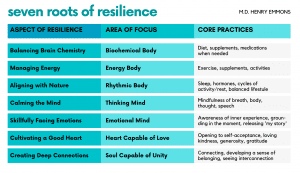Inner Transition is an exploration of the processes and phenomena going on within ourselves that shape how we do Transition. The nature of our relationship with our inner life determines how able we are to make the practical lifestyle, relational and cultural changes needed for Transition – as well bringing precious depth, texture and meaning into our everyday lives.
Inner Transition supports us to choose healthier, more resilient, connected and caring ways of being and acting in the world. By liberating us from our habitual and addictive tendencies, our identity politics and cultural conditioning, Inner Transition supports us to experience our inseparability and inter-dependence in the world – and therefore to make choices based on the needs of ourselves, others and the natural world. Through this we become more and more able to bring our head, hands and heart into alignment – making the practical changes needed for Transition to feel so much more easeful.
This section of Inner Transition resources focuses on personal resilience for individuals; other sections focus on communication, group culture, and social change. Many of these topics overlap; some topics, as noted, are treated in more depth in a separate resource.
What is Personal Resilience?
Resilience is the ability to cope with disturbing situations or adversity, and to regain balance afterward. Navigating uncomfortable situations is a common and important challenge for most people. Individuals can learn to cope with and respond to disturbances or adversity in ways that facilitate integrity and harmony, deepening and strengthening relationships, leading to breakthroughs rather than breakdowns.
One way to think of this is that each person has an inner ‘container’ for personal energy. Like a rechargeable battery or a fuel tank, these containers hold various inner resources – physical, emotional, mental, social, etc. that supply an individual with energy. Individuals naturally use their personal energy for daily activities, with some activities using more than others. Resilience and self-care meet when people become aware of re-filling these containers before they become empty, and learn to make choices that support their well-being.
Well-being relies on these containers having enough inner resources to continue supplying energy. Containers full of inner resources are an indicator of an individual’s well-being. The size of the container may vary; so some individuals may need to re-fill their containers more often than others.
Personal resilience is about an individual:
- noticing when it’s time to re-fill their container (being self-aware).
- giving themselves time to re-fill their container (by creating and adhering to healthy boundaries e.g. personal/professional, being in company/being alone)
- knowing what specifically helps them to re-fill their container (e.g. down time, meditation, creativity, activity etc.)
- practicing specific ways to re-fill their container (e.g. a regular exercise/creative practice or receiving 1-1 therapeutic support).
Seven Roots of Resilience (Henry Emmons)
Psychiatrist Henry Emmons has described seven roots of resilience, each linked to practices that promote well-being, and that can improve an individual’s capacity to recover after a disturbance. Three relate to the physical body; two relate to the mind and the emotions; and two relate to compassion and connection.

Click here to access the Inner Transition personal resilience resources.